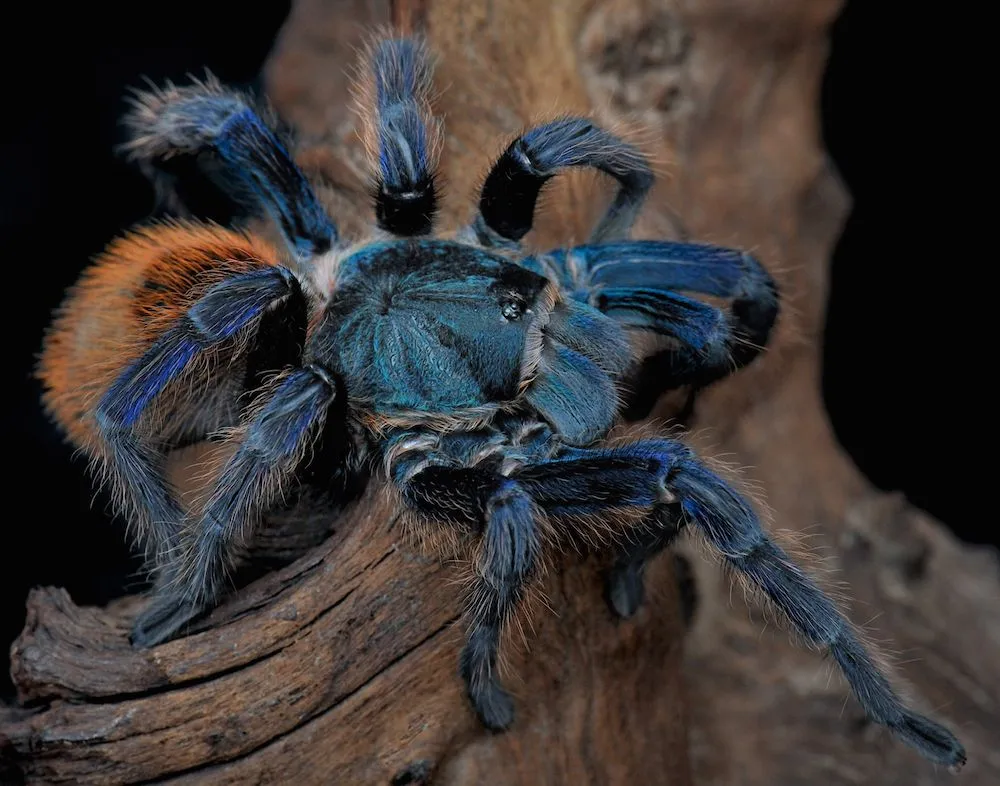Choosing Your Blue African Tarantula
The Blue African Tarantula, scientifically known as Monocentropus balfouri, is a stunning and increasingly popular pet. Its vibrant blue coloration and relatively docile temperament make it a favorite among tarantula enthusiasts. However, responsible ownership begins with careful selection. Before acquiring a Blue African Tarantula, it’s crucial to research reputable breeders or pet stores. Look for sources that prioritize the health and well-being of their animals, and that can provide information about the tarantula’s origin and age. This step will ensure you’re getting a healthy specimen and supporting ethical practices within the pet trade. When choosing your new pet, consider its size and age and determine if a juvenile or adult tarantula is best for you. Juveniles require more delicate care, but they offer the rewarding experience of watching them grow. Adults are generally easier to care for, but their temperament may be less predictable. A healthy start is fundamental for the tarantula’s lifespan, which can stretch for over a decade if cared for correctly.
Selecting a Healthy Specimen
Choosing a healthy Blue African Tarantula is paramount to its long-term well-being. The first thing to look for is an active and alert tarantula. Avoid any tarantula that appears lethargic or unresponsive. Check for any physical deformities, such as missing limbs or damaged fangs. The tarantula’s abdomen should be plump and not appear shrunken, which could indicate dehydration or lack of food. It’s also important to inspect the tarantula’s legs and body for parasites, such as mites, which are often visible as tiny, moving dots. A healthy tarantula will have a glossy appearance, while one that is ill or stressed may appear dull. Asking the breeder questions about the tarantula’s feeding habits and molting history can provide valuable insights into its health. A good breeder will be happy to provide this information, while a hesitant one may be a red flag. Be patient when selecting, and don’t rush into a purchase. Choosing a healthy specimen sets the foundation for a positive and rewarding experience.
Recognizing Signs of a Healthy Tarantula
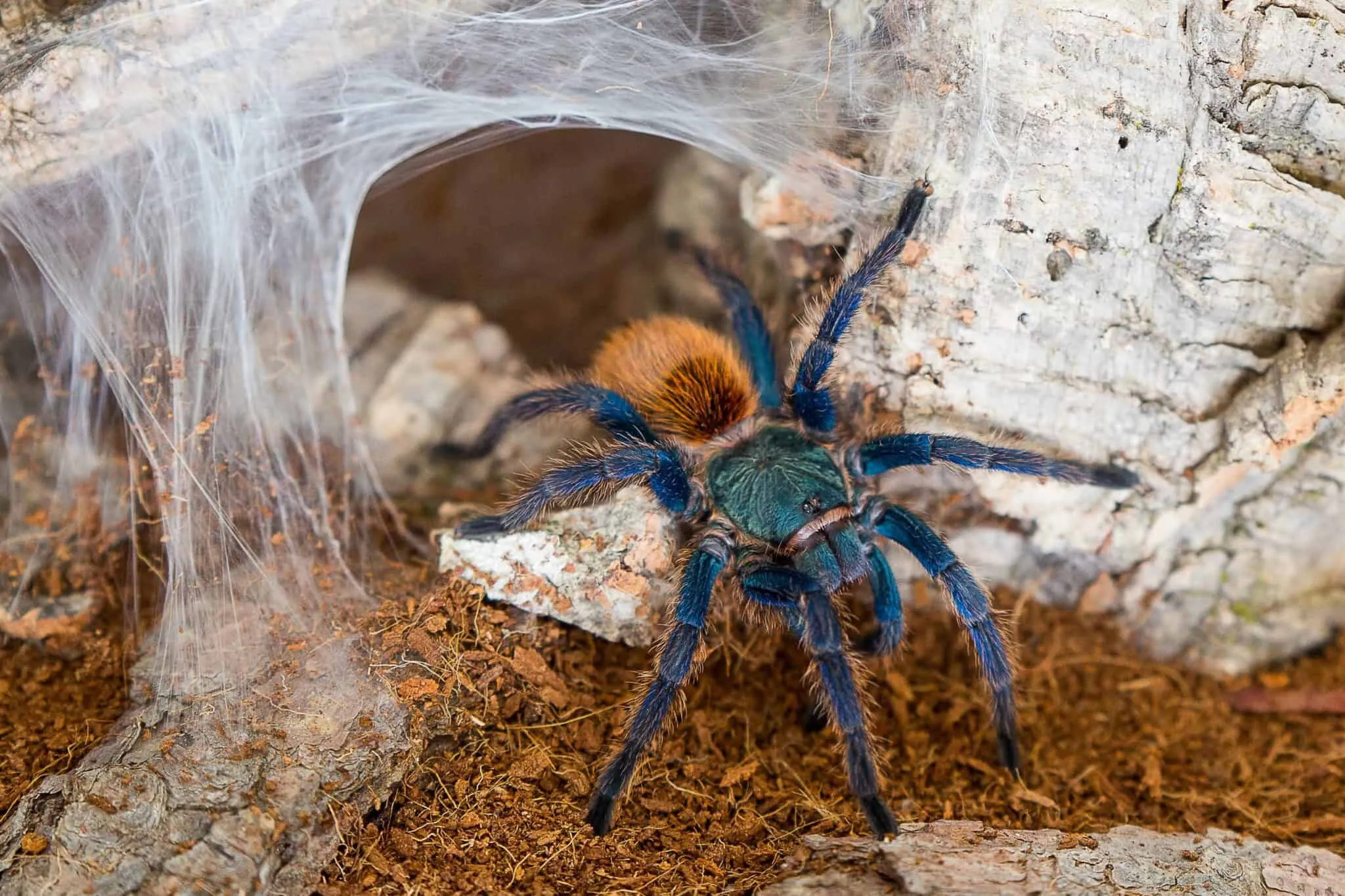
A healthy Blue African Tarantula exhibits several key characteristics that indicate its well-being. As mentioned previously, the tarantula should be active and responsive to its environment. Watch for the tarantula to be interested in food and to have a healthy appetite. A healthy tarantula will readily accept prey items, such as crickets or roaches. The abdomen should be of a good size, indicating it’s well-fed and hydrated. Regular molting is also a sign of a healthy tarantula, as it’s how they grow and shed old exoskeletons. Observe the tarantula’s posture and movement. It should move with ease and not display any signs of difficulty or paralysis. The fangs should be intact and functional. A healthy tarantula will use its fangs to capture and consume prey. A glossy exoskeleton also indicates good health. Monitoring these signs regularly will enable you to address any potential health issues promptly and provide your tarantula with the best possible care.
Setting Up the Ideal Habitat
Creating a suitable habitat is essential for the health and happiness of your Blue African Tarantula. The enclosure should be appropriately sized for the tarantula’s size, and a good rule of thumb is to provide an enclosure that is at least twice the tarantula’s leg span in width. Glass or acrylic terrariums are ideal, as they allow for good ventilation and provide a clear view of your pet. The enclosure should have a secure lid to prevent escape, and it’s important to ensure that the lid is well-ventilated to prevent a buildup of humidity. A basic setup for a terrestrial species like this includes a substrate, a water dish, and a hide or shelter. Choose a location for the enclosure that is away from direct sunlight and drafts. Avoid placing the enclosure in high-traffic areas where it may be subject to vibrations or disturbances. Setting up a comfortable and appropriate habitat is an important part of your care.
Substrate Selection for Your Tarantula
The substrate, or bedding, plays a vital role in the Blue African Tarantula’s habitat. It provides a surface for the tarantula to walk on, burrow in, and molt in. A good substrate also helps to maintain humidity levels, which is crucial for the tarantula’s health. Recommended substrates include a mixture of peat moss, coconut fiber, and a little bit of sphagnum moss. This combination offers good moisture retention and allows the tarantula to burrow. Avoid using substrates like sand or gravel, as these can be difficult for the tarantula to burrow in and may cause injury if ingested. The substrate depth should be several inches deep to allow the tarantula to create a burrow if it chooses. Also, change the substrate regularly to maintain hygiene and prevent the buildup of harmful bacteria or mold. A clean substrate is essential for your tarantula’s health.
Maintaining Proper Humidity Levels
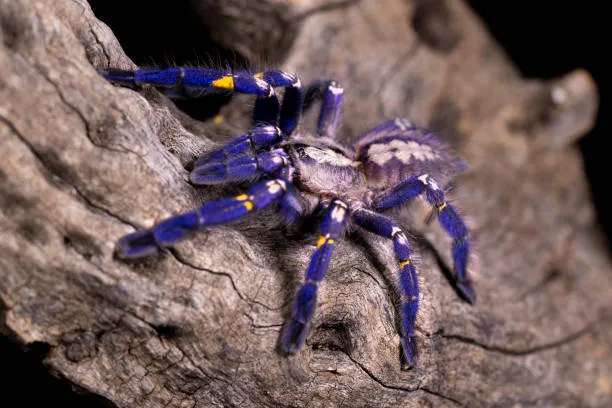
Humidity is a critical factor in the care of Blue African Tarantulas. They thrive in a moderately humid environment, and proper humidity levels are essential for molting and overall health. The ideal humidity range for this species is typically between 65% and 75%. You can measure humidity using a hygrometer, which is a valuable tool for monitoring the conditions in your tarantula’s enclosure. To maintain humidity, mist the enclosure with dechlorinated water every few days, or as needed, to keep the substrate slightly moist. Ensure the enclosure has adequate ventilation to prevent mold growth. The water dish also contributes to humidity, so be sure to keep it filled with fresh water. If the humidity is too low, the tarantula may have difficulty molting. If the humidity is too high, it can lead to mold and bacterial growth, which are harmful to the tarantula. Proper management and monitoring are vital.
Temperature Regulation
Temperature is another crucial aspect of tarantula care. Blue African Tarantulas prefer temperatures between 75°F and 85°F (24°C and 29°C). It’s important to provide a stable temperature range. The enclosure should be kept away from direct sunlight, which can cause temperatures to rise to dangerous levels. In most homes, the ambient temperature is usually sufficient. However, if the room is consistently cool, you may need to use a heat mat or ceramic heat emitter to provide supplemental heat. If using a heat source, it’s essential to monitor the temperature with a thermometer to avoid overheating. Always place the heat source on one side of the enclosure to create a temperature gradient, allowing the tarantula to regulate its body temperature. Avoid using heat rocks, as they can cause burns. A thermometer is a necessary item to ensure a good environment.
Providing Optimal Nutrition
Feeding your Blue African Tarantula properly is vital to its health. These tarantulas are insectivores, meaning their diet consists primarily of insects. The best prey items are crickets, roaches, and mealworms. The size of the prey should be appropriate for the size of the tarantula; as a general rule, the prey should not be larger than the tarantula’s body. Juvenile tarantulas should be fed more frequently, usually every other day, while adult tarantulas can be fed once or twice a week. Always remove any uneaten prey after 24 hours to prevent them from stressing the tarantula or injuring it during a molt. Crickets should be gut-loaded before being fed to the tarantula. Gut-loading is the practice of feeding the crickets nutritious food, such as vegetables and insect food, which increases the nutritional value of the prey. Providing clean water is also essential. Use a shallow water dish, and ensure the water is always fresh. Nutrition is a key element in the overall care of the tarantula.
Feeding Frequency and Prey Selection
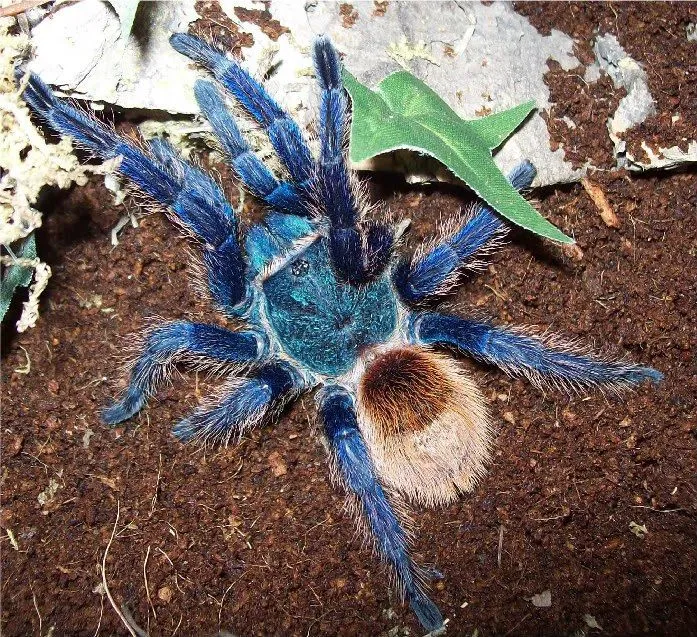
The frequency of feeding depends on the age and size of your Blue African Tarantula. Spiderlings and juvenile tarantulas need to eat more often than adults, as they are constantly growing. Typically, spiderlings should be fed every other day, while juveniles can be fed two to three times a week. Adult tarantulas can often be fed once or twice a week. The type of prey you offer also plays a part in the overall health of your tarantula. Crickets, roaches, and mealworms are all suitable prey items. Always select prey that is the appropriate size for your tarantula. Gut-load the prey before feeding it to your tarantula, meaning that you feed the prey nutritious food before it becomes a meal. This will help ensure that your tarantula receives the best nutrition. It’s important to monitor your tarantula’s feeding habits. If your tarantula is not eating, it could be a sign of a problem, such as an impending molt or illness. A healthy appetite is a good sign.
Watering Your Blue African Tarantula
Providing fresh water is an essential aspect of your Blue African Tarantula’s care. They need access to clean water for hydration, as well as for regulating their internal systems. The best way to provide water is to use a shallow water dish, which prevents the tarantula from drowning. The dish should be filled with fresh, dechlorinated water at all times. You can also lightly mist the enclosure every few days to increase humidity and provide additional water droplets for the tarantula to drink from. Be sure to keep the water dish clean and replace the water regularly to prevent the growth of bacteria or algae. Monitor your tarantula’s behavior to ensure it is drinking. Dehydration can be a serious problem, so access to water is critical for the well-being of your tarantula. If you notice your tarantula is showing signs of dehydration, such as a shrunken abdomen, consult an expert right away.
Handling and Safety Precautions
While Blue African Tarantulas are known for their relatively docile nature, it’s important to handle them with caution. Handling should be kept to a minimum, as it can cause stress to the tarantula. Avoid handling your tarantula when it is about to molt, as it will be more vulnerable and sensitive. The tarantula’s fangs contain venom, although their bite is not typically considered medically significant for humans. However, some people may experience an allergic reaction. If you must handle your tarantula, do so over a soft surface, such as a bed or a carpet, to prevent injury if it falls. Always wash your hands before and after handling your tarantula. This helps to prevent the transfer of harmful substances. It’s better to admire your tarantula in its enclosure. Responsible ownership also means being aware of the safety risks and taking precautions to ensure a safe experience.
Understanding Tarantula Behavior
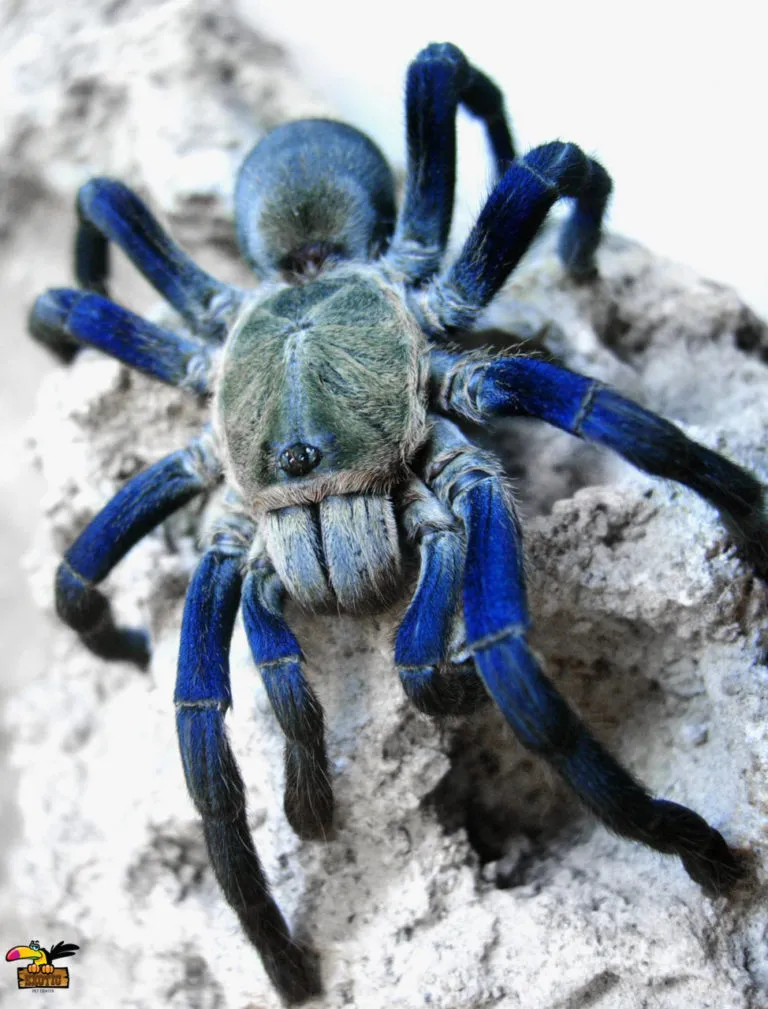
Understanding the behavior of your Blue African Tarantula can help you provide the best care. Tarantulas are generally solitary creatures and spend most of their time in their burrows or hiding places. The tarantula may become more active at night. The behavior of your tarantula can provide valuable insights into its well-being. For example, a tarantula that is not eating may be preparing to molt, while a tarantula that is constantly hiding may be stressed. A tarantula that is defensive, raising its front legs or showing its fangs, is signaling that it feels threatened and should be left alone. When you observe your tarantula’s behavior, you’ll become more familiar with its habits. Understanding these behaviors helps you to anticipate and respond to your tarantula’s needs.
Safe Handling Techniques
If you choose to handle your Blue African Tarantula, do so with great care. Always approach the tarantula slowly and gently, and avoid making any sudden movements that could startle it. The best way to handle a tarantula is to gently encourage it to walk onto your hand. Avoid grabbing or squeezing the tarantula, as this could injure it. Always handle the tarantula close to the ground, or over a soft surface, such as a bed or a carpet. This will prevent injury if the tarantula falls. It’s important to be aware that tarantulas have small, barbed hairs on their abdomens. These hairs, called urticating hairs, can be flicked at potential threats and can cause irritation if they come into contact with your skin or eyes. If you’re handling a tarantula, avoid touching your face or eyes. Remember, while the Blue African Tarantula is generally docile, it’s still a wild animal, and respect for its needs is essential.
Regular Habitat Maintenance
Regular habitat maintenance is essential for keeping your Blue African Tarantula healthy and happy. This includes tasks such as cleaning the enclosure, removing waste, and replacing the substrate. Spot-clean the enclosure regularly, removing any uneaten food, dead insects, or other debris. This helps to prevent the buildup of bacteria and mold. The frequency of cleaning will depend on the size of the enclosure and the amount of waste produced by the tarantula. Every few months, the substrate should be completely replaced. The frequency of substrate replacement will depend on the type of substrate and the humidity levels in the enclosure. Clean the water dish regularly, using warm water and a mild soap. Maintaining a clean and well-maintained habitat is important for the health of your tarantula.
Cleaning and Waste Removal
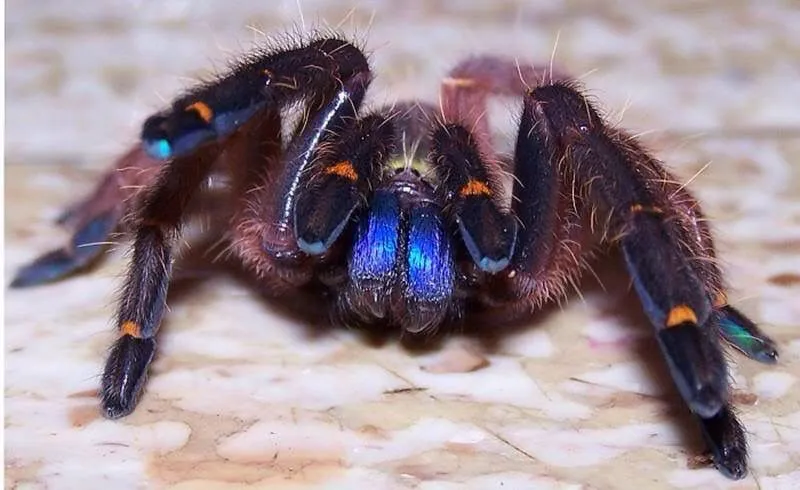
Cleaning the enclosure and removing waste are essential parts of the maintenance routine. Spot-cleaning the enclosure should be done regularly, ideally once a week or more frequently, depending on how quickly waste accumulates. Remove any uneaten food items, which can attract pests or begin to decay. Remove any dead insects, molted exoskeletons, or any other debris. The frequency of substrate replacement also depends on the substrate type. As the substrate breaks down over time, it can lose its ability to absorb moisture and control odors. During routine cleaning, inspect the substrate for any signs of mold or unwanted guests, such as mites. Proper hygiene will maintain a suitable and healthy living environment for your Blue African Tarantula.
Health Monitoring and Common Issues
Regular health monitoring is crucial for identifying and addressing any potential issues with your Blue African Tarantula. Observe your tarantula’s behavior, appetite, and overall appearance. Look for any changes in behavior. A tarantula that is lethargic, or that spends an unusual amount of time in its burrow, may be ill or stressed. It is important to monitor your pet to look for any physical abnormalities, such as missing limbs, wounds, or parasites. Some common health problems include mites, fungal infections, and dehydration. Mites can be visible as tiny, moving dots on the tarantula’s body. Fungal infections can occur if the enclosure is too humid or the substrate is not properly maintained. Dehydration can occur if the tarantula does not have access to enough water or if the enclosure is not humid enough. The best way to deal with these issues is to prevent them. If you suspect your tarantula is ill, it is best to seek advice from a veterinarian or a tarantula expert.
Recognizing and Addressing Common Problems
Knowing how to recognize and address common health problems is essential for responsible tarantula care. One of the most common problems is mite infestations. Mites can irritate the tarantula and feed on its hemolymph. If you notice mites, it’s important to isolate the affected tarantula and clean its enclosure thoroughly. Another common problem is fungal infections, which can result from poor hygiene. Ensure the enclosure is properly ventilated and that the substrate is clean. Dehydration is also a potential problem, especially in environments with low humidity. Provide fresh water and maintain appropriate humidity levels. If you notice any unusual behavior, such as a lack of appetite, lethargy, or difficulty moving, it’s important to consult a veterinarian or a tarantula expert. Early detection and treatment are essential for ensuring the long-term health of your pet.
